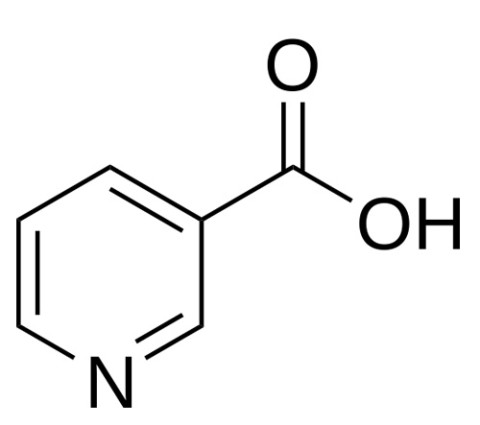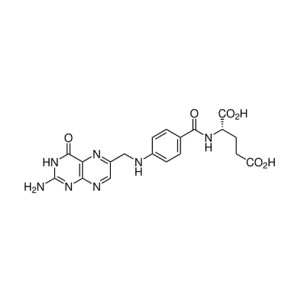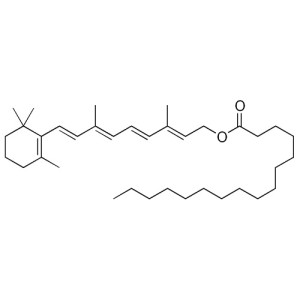Vitamin B3 Niacin (Nicotinic Acid)
Niacin (also known as vitamin B3 or nicotinic acid) is an organic compound with the formula C
6H
5NO
2 and, depending on the definition used, one of the 20 to 80 essential human nutrients. Pharmaceutical and supplemental niacin are primarily used to treat hypercholesterolemia (high cholesterol) and pellagra (niacin deficiency). Insufficient niacin in the diet can cause nausea, skin and mouth lesions, anemia, headaches, and tiredness. The lack of niacin may also be observed in pandemic deficiency disease, which is caused by a lack of five crucial vitamins (niacin, vitamin C, thiamin, vitamin D, and vitamin A) and is usually found in areas of widespread poverty and malnutrition. Niacin has not been found to be useful in decreasing the risk of cardiovascular disease in those already on a statin but appears to be effective in those not taking a statin.
This colorless, water-soluble solid is a derivative of pyridine, with a carboxyl group (COOH) at the 3-position. Other forms of vitamin B3 include the corresponding amide and nicotinamide (“niacinamide”), where the carboxyl group has been replaced by a carboxamide group (CONH
2), as well as more complex amides and a variety of esters. Nicotinic acid and niacinamide are convertible to each other with steady world demand rising from 8,500 tonnes per year in the 1980s to 40,000 in recent years.
Composed with the instant HTML5 Editor. Please purchase a HTMLG license to remove promotional messages like this one.

Starting at
Product Description
| Names | |
|---|---|
| IUPAC name pyridine-3-carboxylic acid |
|
| Systematic IUPAC name
Pyridine-3-carboxylic acid |
|
| Other names Nicotinic Acid Bionic Vitamin B3 |
| Identifiers | |
|---|---|
| CAS Number | 59-67-6 |
| 3DMet | B00073 |
| Beilstein Reference | 109591 |
| ChEBI | CHEBI:15940 |
| ChEMBL | ChEMBL573 |
| ChemSpider | 913 |
| DrugBank | DB00627 |
| EC Number | 200-441-0 |
| Gmelin Reference | 3340 |
| IUPHAR/BPS | 1588 |
| Jmol interactive 3D | Image Image |
| KEGG | D00049 |
| MeSH | Niacin |
| PubChem | 938 |
| RTECS number | QT0525000 |
| UNII | 2679MF687A |
|
InChI[show] |
|
|
SMILES[show] |
|
| Properties | |
|---|---|
| Chemical formula | C 6NH 5O 2 |
| Molar mass | 123.1094 g mol−1 |
| Appearance | White, translucent crystals |
| Density | 1.473 g cm−3 |
| Melting point | 237 °C; 458 °F; 510 K |
| Solubility in water | 18 g L−1 |
| log P | 0.219 |
| Acidity (pKa) | 2.0,4.85 |
| Isoelectric point | 4.75 |
| Refractive index (nD) | 1.4936 |
| Dipole moment | 0.1271305813 D |
| Thermochemistry | |
|---|---|
|
Std enthalpy of formation (ΔfHo298) |
−344.9 kJ mol−1 |
|
Std enthalpy of combustion (ΔcHo298) |
−2.73083 MJ mol−1 |
| Pharmacology | |
|---|---|
| ATC code | C04AC01 C10AD02 |
| Routes of administration | Intramuscular, Oral |
| Pharmacokinetics: | |
| Biological half-life | 20–45 min |
| Hazards | |
|---|---|
| EU classification (DSD) | Xi |
| R-phrases | R36/37/38 |
| S-phrases | S26, S36 |
| NFPA 704 |  |
| Flash point | 193 °C (379 °F; 466 K) |
| Autoignition temperature | 365 °C (689 °F; 638 K) |





